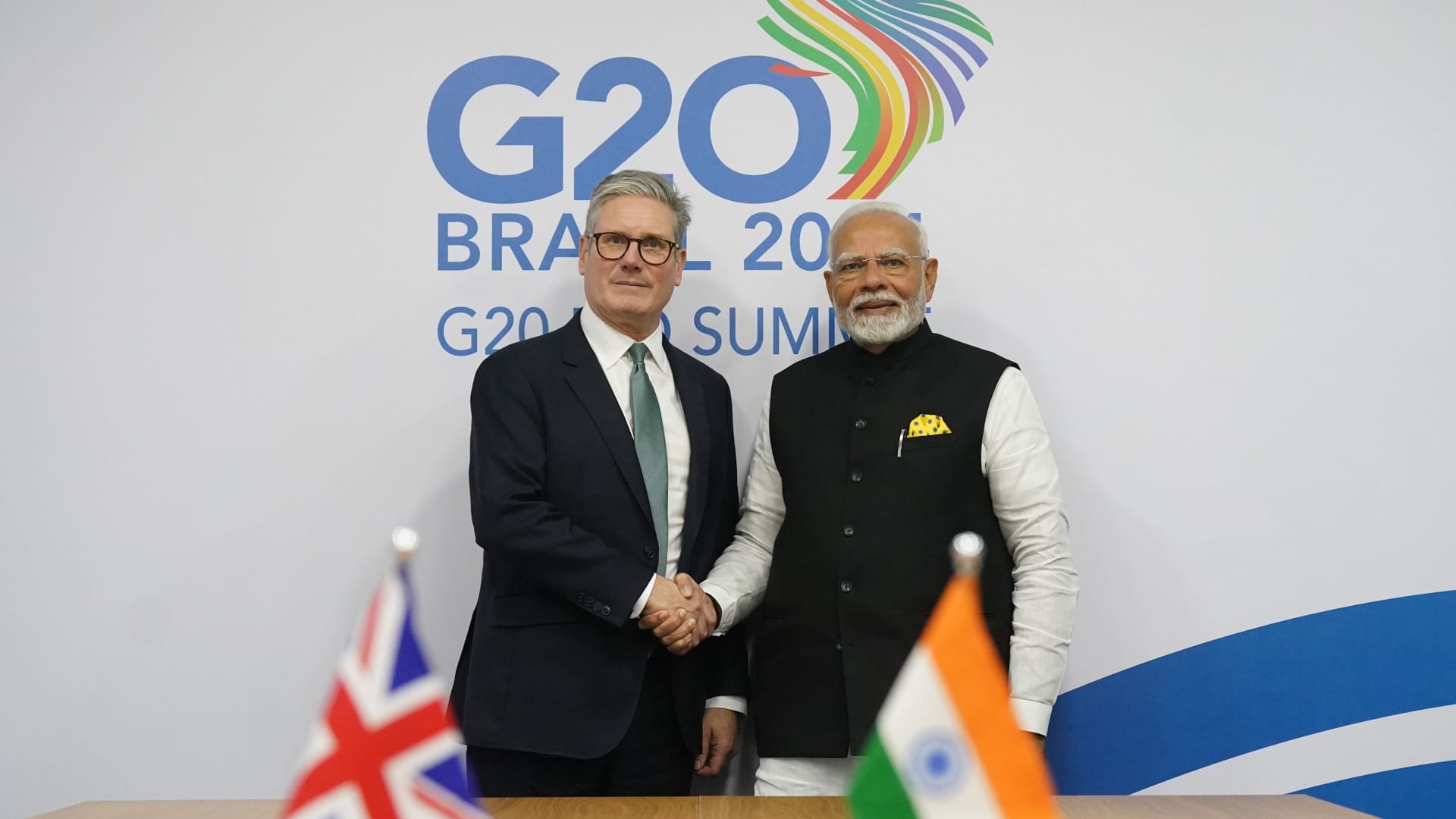The UK-India Trade Deal: A Strategic Move Amid Global Tariff Tensions
A Pivotal Moment in Global Trade
In a world increasingly fraught with trade tensions, the United Kingdom and India have struck a significant bilateral trade agreement. This deal, announced recently, comes at a crucial juncture as global trade dynamics are being reshaped by U.S.-led tariff wars. The agreement is set to have profound implications for both nations, especially in the context of the ongoing trade disputes initiated by the United States.
The Genesis of the Deal
The journey to this trade agreement has been long and complex, spanning several years of negotiations. Formal talks began in 2022, with then-Prime Minister Boris Johnson aiming to finalize the deal by Diwali in October of that year. However, the path was fraught with challenges, including 13 rounds of negotiations that did not yield a breakthrough. The talks were temporarily suspended during the 2024 elections in both nations, but renewed efforts have finally led to a successful outcome.
Key Provisions and Benefits
The trade deal is designed to lower tariffs on a wide array of products, including key exports such as U.K. whisky, cars, gin, cosmetics, and vehicles. The UK estimates that the deal will add an annual £4.8 billion ($6.4 billion) to the British economy, providing a much-needed boost amidst global economic uncertainties. The agreement also aims to increase bilateral trade by an additional $25.5 billion, highlighting the potential economic synergies between the two nations.
One of the most significant aspects of the deal is the gradual reduction of import taxes. Over the next decade, the vast majority of goods traded between the UK and India will become fully tariff-free. This provision is expected to have a profound impact on sectors heavily affected by Donald Trump’s tariffs in the U.S., such as Scotch whisky and car exports. For example, India’s 150% tariff on Scotch whisky will be halved immediately and further reduced to 40% after ten years, significantly enhancing the competitiveness of British goods in the Indian market.
Strategic Implications
The timing of this deal is strategic, coming amidst a global trade war initiated by the United States. The U.S.-led tariff tensions have created a volatile trading environment, prompting countries to seek alternative trade partnerships. India, in particular, has been driven by the turmoil to forge accords beyond old ideological and political ties. The UK, too, has been navigating the complexities of post-Brexit trade relations, making this deal a crucial step in securing its economic future.
The agreement is also a response to the U.S. President Donald Trump’s protective tariffs, which have affected nearly all goods imported into the United States. The average effective U.S. tariff rate has risen from 2.5% to an estimated 27%, the highest level in recent history. This escalation has prompted countries, including India and the UK, to seek more stable and mutually beneficial trade relationships.
Economic and Political Context
The UK-India trade deal is not just an economic agreement but also a political statement. It underscores the growing importance of bilateral relationships in a multipolar world. For the UK, this deal is a significant step in its post-Brexit strategy to diversify its trade partners and reduce its dependence on the European Union. For India, it is a move to strengthen its economic ties with a major global player, diversifying its trade portfolio amidst the U.S.-led tariff wars.
The deal also reflects the broader geopolitical shifts, where countries are re-evaluating their trade policies in response to the U.S.’s protectionist stance. India’s finance minister, Nirmala Sitharaman, has emphasized the need for countries to seek accords beyond old ideological and political ties, a sentiment echoed in the UK-India agreement.
The Road Ahead
The successful implementation of this trade deal will require both countries to navigate a complex web of regulatory and logistical challenges. However, the potential benefits are substantial, with the deal expected to boost sectors hardest hit by Trump’s tariffs. The gradual reduction of tariffs over a decade provides a structured pathway for both economies to adapt and thrive.
The UK and India have demonstrated a commitment to fostering a more open and inclusive trading environment, a move that could set a precedent for other nations grappling with the fallout of the U.S.-led tariff wars. As the global trade landscape continues to evolve, this deal serves as a beacon of hope for countries seeking to build resilient and mutually beneficial trade relationships.
Conclusion
A New Era of Trade Relations
The UK-India trade deal marks a new era in bilateral trade relations, one that is characterized by mutual benefit and strategic foresight. In the face of global trade tensions, this agreement stands as a testament to the power of diplomacy and economic cooperation. As the world watches the unfolding of the U.S.-led tariff wars, the UK and India have shown that there is a way forward—one that prioritizes openness, inclusivity, and economic growth. This deal is not just about tariffs; it is about building a future where trade is a force for good, driving prosperity and stability in an increasingly interconnected world.

